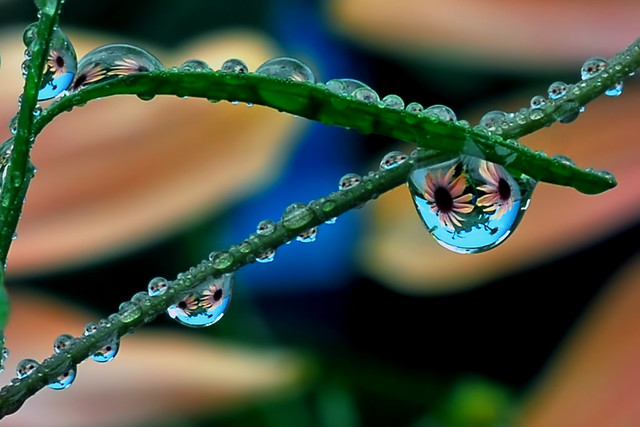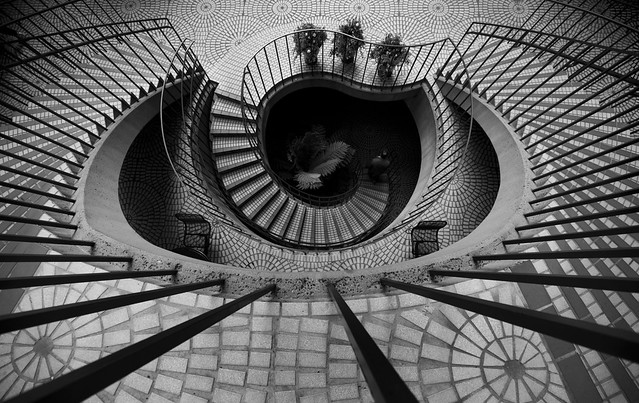6 Ideas to Photograph When You’re Out on the Street |  |
- 6 Ideas to Photograph When You’re Out on the Street
- Awe-Inspiring Timelapse of San Francisco Fog
- 10 Photos That Will Show Your Eye Where to Go: Leading Lines
- Nikon Camera Shutter Symphony, These Instruments are Expensive
| 6 Ideas to Photograph When You’re Out on the Street Posted: 05 Jul 2013 06:16 PM PDT This article is written by James Maher – author of this popular in-depth guide for aspiring street photographers (25% off ending soon): Essentials of Street Photography Seek out EmotionThis is an easy point to make – photographs are better when they show people's emotions. However, it's much easier said than done. It is difficult to capture emotions in the wild, but they are there if you look for them. Be careful about getting overly distracted by a person's clothing or look and instead pay attention to people's faces and postures and capture them when they are expressive – both the strong and subtle expressions.  Protégé, SoHo. Tell a StoryThis is related to photojournalism in a way, but think about a story and capture it. Gentrification in my neighborhood is a big and often talked about issue so when I'm out I pay attention to scenes and situations that portray it.  Gentrification, East Village. The photo above is of a beautiful, old, faded black and red trimmed building that is in the midst of a complete renovation, now half painted in sterile white paint. Black to white – it's so simple yet so poignant. Another example is the shot below of a trendy crowd waiting outside a popular brunch spot. There are a million and a half ways to visually show the effects of gentrification.  Brunch Fur Coat, East Village. Create a Strong DesignWhen all else fails, just create a gorgeous design. Pay attention to colored walls, lines and columns, advertisements, and textures. Pay attention to strong contrasts, especially with colors. I know some of these elements may seem new and ordinary, but as many of them age they will have significant cultural value. Seek out everyday things that are beautiful and create some beautiful scenes. Always pay attention to the lines and corners in your photos and also think about the way that a viewer's eyes might enter and follow through the scene. This is important to the balance of your images.  72 Walker Street.  Flashdancers and Blue Wall, Lafayette Street. Photograph the UnseenOften we are attracted to the colorful, fashionable, extroverted people, or on the other end of the spectrum, to the down and out, the homeless, or the 'dark side'. These extremes account for such a small sliver of actual life and the reality is that a majority of the world resides between them. Capture the stories in the middle.  Construction Worker, Canal Street. And if you ever interview people keep this in mind – the most average looking people often have the most interesting stories to tell. Create Intrigue and AmbiguityFind ways to make people curious about the meaning of your images. Make people question what is going on. Ambiguity done correctly is a special thing. It creates a work that someone can put on their wall and continue to think about over time with the meaning changing constantly depending on what the viewer chooses to believe at any moment.  A Tree Grows, Chase Bank. This is similar to capturing a story and I find it to be the hardest to do. The goal is to capture an image that has a point of view or makes a statement. It us the type of image that you could write a lot about.  Varietions of The Same.  New Arrivals. Above, you'll find a couple of images that are critiques on modern fashion trends and consumption. When shooting street photography, remember, the best shots will not always be glaringly obvious. You must learn how to open your mind and use your eye in way that opens you up to seeing the bigger picture. For Further Training on Street Photography:James Maher authored this popular 141 page eBook covering everything about the genre even down to specific post processing techniques that can bring the best out of street scenes. We were able to arrange a 25% discount which expires soon. Simply use the code picturecorrect at checkout. It can be found here: Essentials of Street Photography Guide Go to full article: 6 Ideas to Photograph When You’re Out on the Street |
| Awe-Inspiring Timelapse of San Francisco Fog Posted: 05 Jul 2013 03:27 PM PDT Photographer Simon Christen has spent nearly 2 years shooting timelapse photos of the San Francisco Bay Area morning fog rolling in. Captured in the Marin Headlands, these scenes of thick, billowy fog drifting through the hills, city and the Golden Gate Bridge at the edge of sunrise inspire a feeling of absolute peace. In this short film titled “Adrift,” Simon Christen shows some of the most captivating scenes he captured (for those of you reading this by email, the timelapse video can be seen here): Christen kept very close track of the weather, waking up at 5am to check weather webcams and decide if the fog was thick enough to make the 45-minute trip to the Marin Headlands. Sometimes he found that once he arrived the fog had already passed, or was too high or thick to see through. Every now and then he would arrive at the exact right time to capture these incredible shots.  The music that accompanies “Adrift” seems to be a perfect fit for each moment because it was created specifically for this timelapse film by Jimmy LaValle of The Album Leaf. The moment the sun rises above the horizon, the fog begins glowing; while the mood of the images change, the music also changes to capture the essence of the sunrise. Christen’s intention with creating this short film is to share the serenity he felt while taking the photos and experiencing it for himself.
You can see Christen’s previous timelapse here: The Unseen Sea For Further Training on Time-lapse Photography:Check out this COMPLETE guide (146 pages) to shooting, processing and rendering time-lapses using a dslr camera. It can be found here: Time-lapse Photography Guide Go to full article: Awe-Inspiring Timelapse of San Francisco Fog |
| 10 Photos That Will Show Your Eye Where to Go: Leading Lines Posted: 05 Jul 2013 12:58 PM PDT Leading lines are lines within an image that leads the viewer’s eye to another point in the image (often the main subject), or occasionally, out of the image. Anything with a definite line can be a leading line. Roads, bridges, trees even a shoreline can lead the eye. Leading lines work very well when combined with the rule of thirds for subject placement. Check out these photos and see if you can stop your eye from following the lines:  photo by Alyona Arnautova photo by nikki  photo by Joseph Teeter  photo by Robert Davis  photo by Kevin Harber photo by Jennifer Hutzel  photo by Evan Leeson  photo by Steve Wall  photo by Thomas Hawk  photo by Tom McLaughlan If you want to know something more about how to use lines in photography, check it out in one of our former articles. Then take your camera and start practicing what you learned. Feel free to post results of it in the comment section below. Have fun! Go to full article: 10 Photos That Will Show Your Eye Where to Go: Leading Lines |
| Nikon Camera Shutter Symphony, These Instruments are Expensive Posted: 05 Jul 2013 10:38 AM PDT Let’s name off the arts: painting, drawing, music, photography, dance, theater, film, sculpting, graphic design, and on and on. Each art has its own particular tools specifically designed to create the art of that type. But what if you used the tools from one art to create another? Obviously, this isn’t possible with every tool. You couldn’t create a sculpture with a paintbrush, nor could you use ballet slippers to create a digital image. But apparently you can use cameras to make music, which is just what Von Wong and Andrew Kesler have teamed up together to create (for those of you reading this by email, the video can be seen here): So maybe this doesn’t have anything to teach us about photography per se, but even in this cute little mini-symphony there is something to learn. Although it looks like Wong just grabbed a bunch of cameras and friends and started pressing buttons, it’s a lot more complicated than that as seen in the behind-the-scenes. And for those interested, here is the making of: The music, though short, still had to be composed, the timing had to be right, the cameras had to be set up, and the cinematographer had to move and pull focus. More work went into this short production than is visible, and that goes for photography too. Though a photograph make look like a simple capture, there is often a lot more involved than we realize.  14 cameras were needed to make the entire 50 second mini symphony Go to full article: Nikon Camera Shutter Symphony, These Instruments are Expensive |
| You are subscribed to email updates from PictureCorrect Photography Tips To stop receiving these emails, you may unsubscribe now. | Email delivery powered by Google |
| Google Inc., 20 West Kinzie, Chicago IL USA 60610 | |
No comments:
Post a Comment